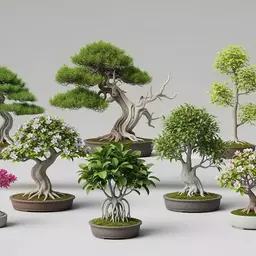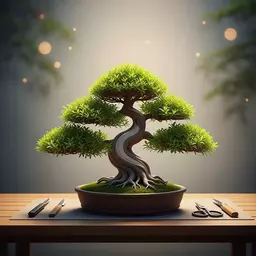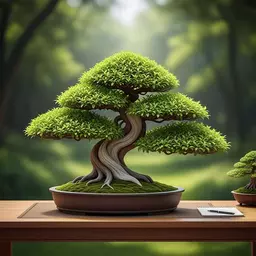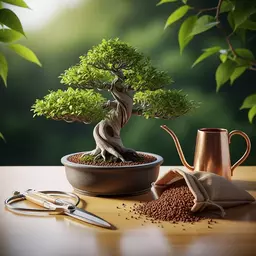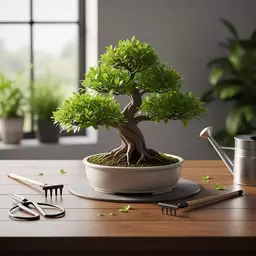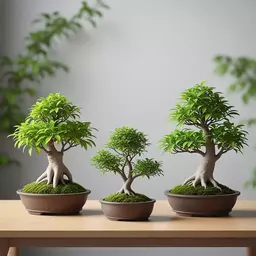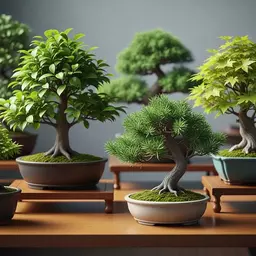Bonsai Wiring: A Simple Guide
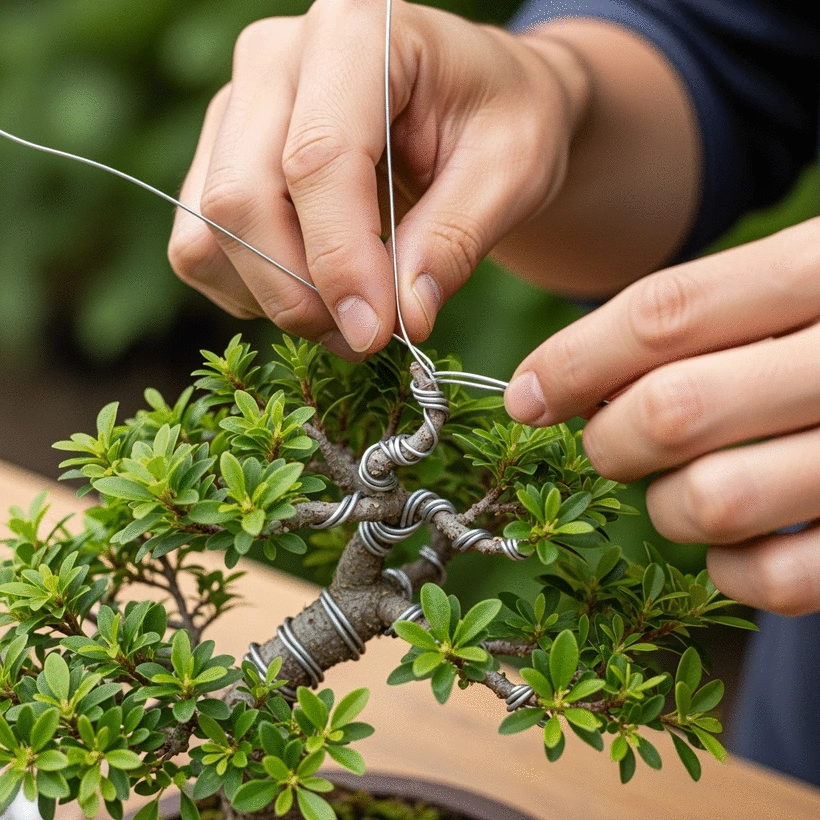
What if I told you that mastering bonsai wiring could transform your artistic vision into a stunning reality? With the right techniques, every branch can flow harmoniously, reflecting nature's beauty while showcasing your creativity.
What You Will Learn
- Wiring is essential for shaping branches and creating an appealing bonsai design.
- Common misconceptions include the belief that wiring harms the tree; done properly, it supports healthy growth.
- Understanding proper wire removal timing ensures the health and aesthetics of your bonsai.
- Visual aids, like diagrams and videos, greatly enhance learning and skill development in bonsai wiring.
- Common mistakes in wiring can be avoided with careful technique and monitoring.
- Engaging with the bonsai community through workshops and forums fosters growth and knowledge sharing.
Bonsai Wiring: Essential Techniques & Common Mistakes
This visual summarizes the crucial aspects of bonsai wiring, highlighting essential techniques for shaping and common pitfalls to avoid for a healthy, aesthetically pleasing tree. For those just starting their journey, understanding bonsai care for beginners is a great foundation before diving into wiring.
Understanding the Importance of Bonsai Wiring
Wiring your bonsai tree is a crucial technique that every enthusiast should master. It’s not just about aesthetics; bonsai wiring is essential for shaping branches and creating a harmonious design. As someone who has spent years cultivating these living pieces of art, I can attest to the transformative power of wiring. It allows you to guide the growth of your tree, ensuring it develops in a way that aligns with your artistic vision.
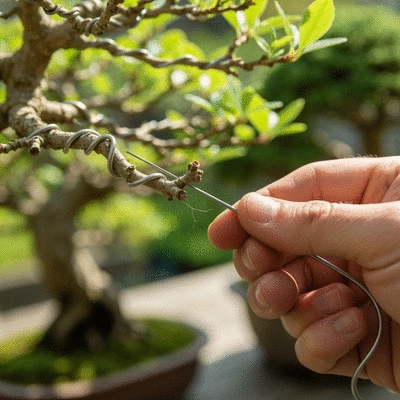
When we think about bonsai, the intricate shapes often come to mind. But without proper wiring, achieving those forms would be nearly impossible. This technique enables you to bend and position branches as needed, ultimately creating a stunning representation of nature’s elegance. Let’s dive deeper into the world of bonsai wiring!
Why Bonsai Wiring is Essential for Branch Shaping
Wiring plays a foundational role in shaping bonsai branches. By carefully applying wire, you can direct the growth of your tree in a specific direction or create a unique style. Here are some key reasons why wiring is essential:
- It enables the bending and positioning of branches.
- Wiring helps establish the overall form of your bonsai.
- Proper wiring promotes healthy growth patterns.
- It allows for experimentation with different styles and techniques.
As you explore the art of bonsai, remember that wiring can be your best friend. It’s a skill that, when mastered, enhances not just the beauty of your tree but also your personal growth as a cultivator. You might also find it helpful to learn about bonsai tools and techniques to complement your wiring skills.
Common Misconceptions About Wiring Techniques
Many new enthusiasts harbor misconceptions about bonsai wiring. One prevalent belief is that wiring harms the tree or stunts its growth. In reality, when done correctly, wiring facilitates healthy development. Here are a few misconceptions to clear up:
- Wiring will damage the tree: Not if applied gently and removed at the right time.
- Only experienced bonsai artists can wire effectively: With practice, anyone can learn this skill!
- Wiring is only for advanced techniques: Beginners benefit greatly from understanding wiring basics.
By addressing these misconceptions, we can cultivate a more informed community of bonsai enthusiasts. Wiring isn’t just a technique; it’s an essential part of the bonsai journey!
The Role of Wiring in Bonsai Aesthetics and Design
Wiring significantly contributes to the aesthetics of your bonsai. It allows you to create a sense of movement and flow within the tree, making each piece a unique reflection of your artistic vision. Here are some elements to consider:
- Branch positioning can mimic natural growth patterns found in nature.
- Wiring enhances the visual balance of your bonsai.
- It allows for the creation of dramatic shapes and styles.
As you wire your bonsai, think of yourself as an artist, shaping a living masterpiece. Each twist of the wire is a brushstroke, and your tree is the canvas. Embrace the opportunity to bring your creative vision to life at Shire Bonsai!
We Want to Hear From You!
What has been your biggest challenge with bonsai wiring? Share your experiences and tips with the community below:
Recognizing Common Mistakes and Safety Precautions
Wiring your bonsai tree is a delicate process that requires attention and care. However, it's easy to make mistakes that can hinder your tree's growth or even damage it. At Shire Bonsai, we believe that understanding these common errors is key to a successful bonsai journey!
So, let's dive into how you can recognize and avoid these pitfalls to help your bonsai thrive.
Identifying Mistakes in Wiring Techniques
Have you ever found yourself cringing after realizing you’ve wired a branch incorrectly? You're not alone! Many bonsai enthusiasts face challenges when they're starting out, like:
- Over-tightening the wire, which can damage the bark.
- Failing to position the wire correctly, leading to unnatural angles.
- Neglecting to monitor the wire’s pressure as the branches grow.
Recognizing these mistakes early on can save you from future heartbreak and help your bonsai flourish.
Safety Tips for a Successful Wiring Experience
Wiring your bonsai might seem straightforward, but safety should always come first! Here are some essential safety tips to ensure a smooth process:
- Always use gloves to protect your hands from sharp wires.
- Use sturdy, appropriate tools to avoid accidents.
- Work in a well-lit area to enhance visibility and reduce the risk of injury.
By keeping these safety measures in mind, you’re not just protecting yourself—you’re also safeguarding your bonsai masterpiece!

Common Mistakes in Bonsai Wiring and How to Avoid Them
Even seasoned bonsai artists can fall victim to common wiring mistakes. Here’s a list of common errors along with tips to avoid them:
- Incorrect Wire Gauge: Using a wire that is too thick can constrict growth, while one that is too thin won’t hold the shape. Always match the wire gauge to the size of the branch.
- Improper Wiring Technique: Not wrapping the wire in the right direction can lead to undesirable bending. Remember, wrap the wire clockwise for counter-clockwise branches and vice versa!
- Ignoring Seasonal Changes: Wiring during the wrong season can lead to stress on the tree. Be mindful of your bonsai’s active growth periods for the best results.
By avoiding these common mistakes, you’ll be well on your way to mastering the art of bonsai wiring! For more insights on shaping, you might want to look into bonsai pruning techniques for beginners.
Timing and Techniques for Wire Removal
Once you've wired your bonsai, knowing when and how to remove that wire is just as important as the initial application. Timing is everything! Let’s explore the signs that indicate it's time to remove the wire.
When to Remove Wiring: Signs to Look For
Your bonsai tree will communicate when it’s time for wire removal. Here are key signs to keep an eye on:
- The wire has started to dig into the bark.
- The branches have successfully set in their new positions.
- Growth has slowed down, indicating that the wire has become a hindrance.
Recognizing these signs will help you maintain the health and aesthetics of your bonsai.
Safe Techniques for Wire Removal
Removing wire can be a delicate task. Here’s how to do it safely:
- Use wire cutters to snip the wire at various points, rather than trying to pull it off in one go.
- Be gentle to avoid damaging the branches or bark during removal.
- Check for any areas where the wire may have wrapped too tightly before fully removing it.
Taking your time with this process ensures you won’t accidentally harm your bonsai.
Impact of Wire Removal on Bonsai Growth Patterns
After wire removal, your bonsai will begin to adapt to its new shape. This is an exciting moment, as it allows you to observe how your careful training has influenced its growth. Typically, you can expect:
- Branches to hold their new shapes and continue growing in the desired direction.
- New growth to emerge, filling in spaces that may have seemed bare.
- A healthier overall tree as it adjusts to its new form!
Understanding the impact of wire removal is essential for your ongoing journey in bonsai cultivation.
Frequently Asked Questions About Bonsai Wiring
Q1: Is bonsai wiring harmful to the tree?
A1: No, when done correctly, bonsai wiring is not harmful. It's a fundamental technique for shaping branches and guiding growth without causing damage. Misconceptions often arise from improper application or delayed removal of the wire.
Q2: How do I know when to remove the wire from my bonsai?
A2: Key signs for wire removal include the wire starting to dig into the bark, branches holding their new positions, and a noticeable slowdown in growth. Always monitor your tree closely, especially during active growing seasons.
Q3: What are the most common mistakes beginners make in bonsai wiring?
A3: Common mistakes include using an incorrect wire gauge (too thick or too thin), improper wrapping direction leading to undesirable bends, over-tightening the wire, and ignoring seasonal changes which can stress the tree.
Q4: Can I learn bonsai wiring if I'm a beginner?
A4: Absolutely! While wiring might seem complex, beginners can learn effectively with practice and the right resources, such as step-by-step diagrams, video tutorials, and workshops. It's a skill that develops over time.
Q5: What tools are essential for safe wire removal?
A5: The most essential tool for safe wire removal is a pair of wire cutters. They allow you to snip the wire at various points, minimizing the risk of damaging the branches or bark compared to pulling the wire off.
Enhancing Your Wiring Skills with Visual Aids
As bonsai cultivation requires both artistry and technique, visual aids can significantly enhance your learning experience. Let’s explore how you can improve your skills through various resources.
Incorporating Diagrams and Photos for Better Understanding
Visual aids such as diagrams and photos can make complex wiring techniques more accessible. Here’s how you can use them effectively:
- Look for step-by-step diagrams that break down wiring processes.
- Reference photos of successful wire placements to guide your own efforts.
- Join online forums where members share their diagrams and experiences!
These resources can bridge the gap between theory and practice, enriching your bonsai journey.
Recommended Video Tutorials for Visual Learners
For those who are more inclined to learn through watching, video tutorials can be incredibly beneficial. Consider:
- Searching for reputable bonsai channels on platforms like YouTube.
- Finding tutorials that specifically focus on wiring techniques.
- Participating in live demonstrations to ask questions and engage with experts.
Video content can provide real-time guidance, making learning more interactive and fun!
Workshops and Online Courses for Bonsai Enthusiasts
If you're eager to deepen your knowledge, enrolling in workshops or online courses can be a game-changer. Here’s what to look for:
- Workshops led by experienced bonsai artists that cover wiring and other techniques.
- Online courses that offer structured learning with video content and community support.
- Local bonsai clubs that host events and classes for hands-on experience.
Engaging with the bonsai community will not only enhance your skills but also connect you with fellow enthusiasts!
Final Thoughts on Your Bonsai Wiring Journey
Your journey into the world of bonsai wiring is just beginning! With each mistake, you’ll gain valuable insights that will refine your techniques and enhance your artistry. Remember, regular care, particularly during various seasons, is vital, so be sure to consult a bonsai care guide for Australians to keep your tree healthy.
Recap of Key Wiring Techniques and Insights
- Recognizing common mistakes and taking necessary precautions.
- Understanding the timing and techniques for wire removal.
- Utilizing visual aids to improve your wiring skills.
These insights will serve as a strong foundation for your bonsai journey.
Encouraging Continued Learning and Practice in Bonsai Art
Bonsai cultivation is an art that thrives on practice and passion. I encourage you to keep experimenting, learning, and growing alongside your trees. Remember, every bonsai tells a story, and you are the artist behind that narrative!
Recap of Key Points
Here is a quick recap of the important points discussed in the article:
- Wiring is essential for shaping bonsai branches and promoting healthy growth patterns.
- Common misconceptions about wiring include the belief that it harms the tree or is only for experienced artists.
- Understanding timing for wire removal is crucial to maintaining the health of your bonsai.
- Utilizing visual aids such as diagrams and video tutorials can significantly enhance your wiring skills.
- Always prioritize safety by using gloves, appropriate tools, and working in a well-lit area.
